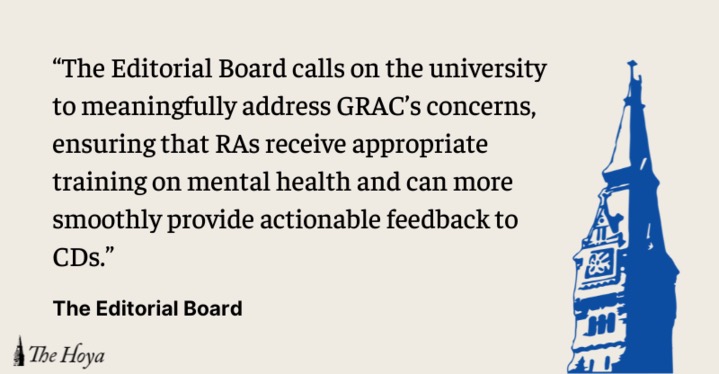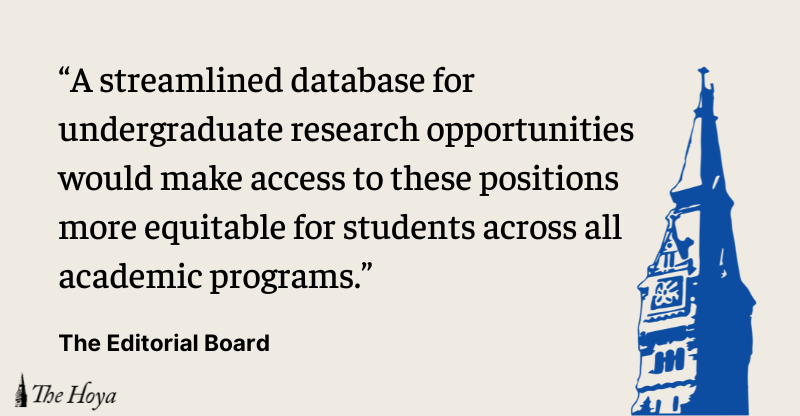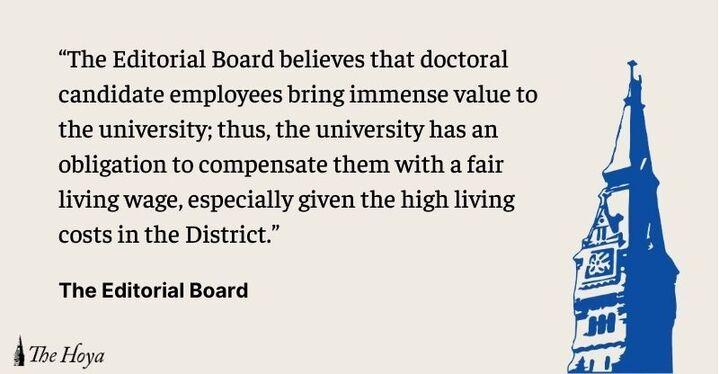From weekend trips to downtown Washington, D.C. to internships on Capitol Hill, university admissions officers and Blue and Gray tour guides extol the social, academic and professional opportunities that students gain from living in the nation’s capital. They portray access to the nation’s capital as one of the defining features of the Georgetown experience.
But they are wrong to take pride in giving students access to everything D.C. has to offer.
The lack of readily accessible public transportation services beyond buses operated by the Washington Metropolitan Area Transit Authority makes venturing off campus both more time-consuming and more expensive than it is for students at other D.C. universities.
The university’s current resources for providing efficient and cheap transportation are insufficient.
Georgetown University Transportation Services buses may be useful for transporting students to major hubs near the university, such as Dupont Circle and Rosslyn, where access to Metro stations is readily available. But, like their WMATA counterparts, GUTS buses are susceptible to traffic conditions – particularly during rush hour – limiting their reliability for expedient transportation to the city.
Because their routes have a limited reach, students travelling to locations beyond those covered by them – such as Tenley Town and Adams Morgan – must spend more time and perhaps even more money in commuting.
Students are missing out from taking advantage of valuable opportunities for education and camaraderie, from living in a city as dynamic as D.C. and from making the most of their time at Georgetown.
This editorial board recognizes that Georgetown cannot do much to resolve the issue of timeliness. Previous efforts to construct a Georgetown Metro station have been inhibited by high costs, concerns regarding the practicality of its implementation and skepticism on behalf of neighborhood residents.
But the university should address the financial aspect of the problem. With the university aiming to make progress in alleviating hidden costs of attendance, it should consider providing subsidized SmarTrip cards through WMATA’s U-Pass program, which grants college students in the D.C. area unlimited use of WMATA transportation at a fee of $1 per day, for the duration of a semester.
With WMATA bus and Metro fares starting at $2.00 per trip, the program proves a cost-effective alternative, particularly for students who need to use these services repeatedly on a daily basis.
Other universities in the D.C. area have already implemented such a program successfully. American University piloted the program in the fall of 2016, and with 90 percent of enrolled students taking advantage of it, continued providing full-time undergraduate and graduate students with cards for a flat fee of $136 per semester. All American University students, unless they are studying abroad, must enroll in the program.
If Georgetown institutionalized a similar initiative, however, it should take advantage of its professional resources on campus to ensure that only the students interested in the program pay for it, making it even more cost-effective.
As academics and extracurriculars demand a large time commitment from students and as Georgetown’s attendance cost increases year after year, students need efficient and cheap alternatives to travel off campus.
Georgetown should pilot the program through the Cawley Career Education Center. Students with internships off campus are more likely to take the full advantage of a subsidized SmarTrip card — it would make sense for the Cawley center to offer the service as an alternative to supporting these students, particularly those whose internships provide no monetary compensation.
The Cawley Center should dedicate part of its newly-approved internship stipend to cover the cost of the cards for students in a financial strain.
Were the program to attract a substantial amount of students without internships, Georgetown should analyze offering enrollment into it through MyAccess, in a similar way that students enroll in a meal or health care plan and pay for these services together with tuition.
Such a service would not only benefit the student body, but also the university and WMATA. The program would legitimize the university’s claim that it takes advantage of its location to provide students access to unique opportunities and advance the administration’s goal to reduce hidden costs. And for WMATA, the subsidy is a chance to obtain revenue it is currently not capturing — for instance, it made $2.3 million from its partnership with American University in 2016 — without having to make significant investments in its infrastructure to accommodate a relatively small increase in users.
A lack of accessible transportation alternatives should not be a reason that sudents miss these opportunities, and Georgetown, as a premier university in the D.C. area, should strongly consider reducing the barriers for students wishing to advance their education by engaging with the city.








Skeptical • Dec 8, 2017 at 8:30 pm
Or instead of relying on the university to do everything for them, students could take some accountability and learn how to use the public bus system or ride a bike.